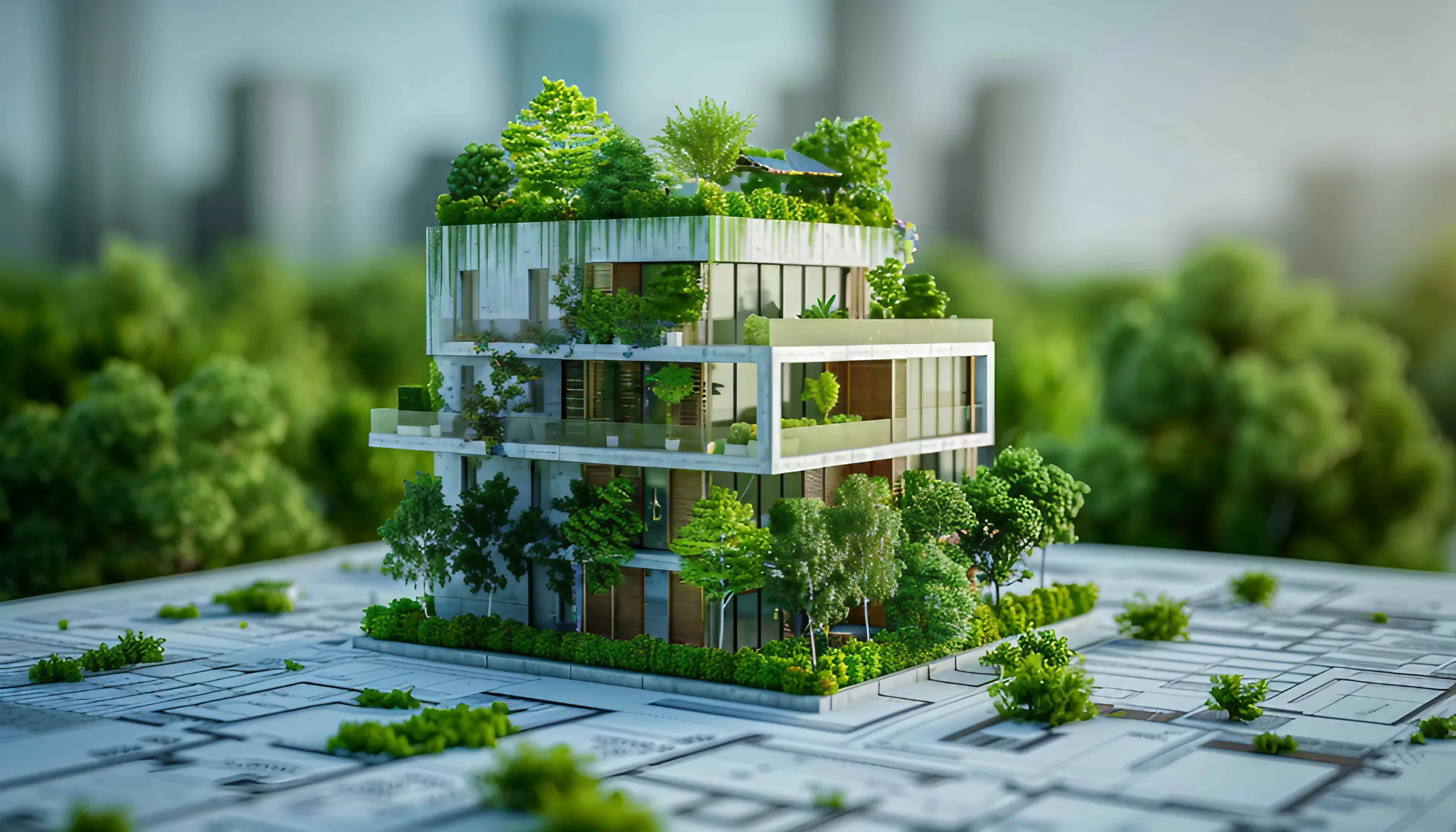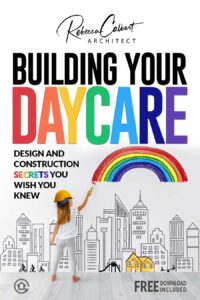When you’re scouting for the top-notch daycare architecture in Sandy Springs, it’s essential to find a partner who understands the delicate balance between functionality and child-friendly aesthetics.

“Daycare Architecture Excellence in Sandy Springs” shines a spotlight on some remarkable projects that have transformed local childcare facilities into vibrant, safe, and nurturing environments.
This concise guide aims to inspire childcare business owners by showcasing the brilliant work done by Sandy Springs’ most talented architects, making it clear why they are the perfect choice for your next childcare project.
Have you ever wondered what sets exceptional daycare architecture apart from the rest? Welcome to the vibrant world of daycare architecture excellence in Sandy Springs!
Whether you’re a childcare business owner looking to create the ideal space for young learners or simply curious about what’s involved in daycare design, you’ve come to the right place.
What Makes Daycare Architecture Important?
Daycare architecture is more than just walls, doors, and windows. It’s about creating a nurturing environment where children can play, learn, and grow. The right design balances aesthetics with functionality, ensuring that both children and caregivers have an optimal experience. Architectural excellence in this field entails considering safety, accessibility, and stimulating environments that encourage curiosity and developmental growth.
The Unique Charm of Sandy Springs
Sandy Springs offers a distinctive architectural backdrop that harmonizes with its lush greenery and community-centric ethos. It’s a location where quality daycare architecture can genuinely shine, blending seamlessly with its surroundings while meeting the community’s needs.
The Community Factor
Sandy Springs isn’t just a backdrop—it’s an integral part of what makes daycare centers here unique. This vibrant community values education, wellness, and green spaces, making a well-designed daycare facility a cornerstone of local life.
Green Spaces and Urban Planning
One of the key elements of Sandy Springs is its commitment to preserving green spaces amidst urban growth. Incorporating natural elements into daycare designs not only aligns with this community value but also offers children a more enriched learning environment.

Key Elements of Excellent Daycare Architecture
To create a daycare center that stands out, you must focus on various architectural elements. Here are a few key components that make a significant difference:
Safety First
In daycare facilities, safety is paramount. Robust architectural planning can help prevent accidents and ensure a secure environment. This includes:
- Rounded furniture corners
- Child-proof locks
- Non-slip flooring
- Secure playgrounds
Functional Layout
Your daycare center’s layout should facilitate smooth operation and oversight. This means strategically placing classrooms, playgrounds, and restrooms for maximum efficiency.
| Area | Importance |
|---|---|
| Classrooms | Central learning and interaction spaces |
| Playgrounds | Physical activity and exploration |
| Restrooms | Quick and easy access for young children |
Aesthetic Harmony
Creating an attractive yet functional space can foster a love for learning and comfort among the kids. Using child-friendly colors, textures, and materials can make a huge difference.
Sustainable Design
Sustainable architecture is not just a trend; it’s a necessity. Incorporating eco-friendly materials, energy-efficient windows, and sustainable practices can make your daycare center more appealing and cost-effective in the long run.
Successful Projects in Sandy Springs
You might be wondering what a top-notch daycare architecture project looks like. Let’s take a quick tour of some standout examples in Sandy Springs.
ABC Learning Center
ABC Learning Center is an exemplary project. It incorporates the best of modern design while adhering to traditional educational values.
Highlights:
- Safety: Custom-built furniture with child-proof edges.
- Design: Open floor plans to enable easy supervision.
- Eco-Friendly: Solar panels and rainwater harvesting systems.
Little Steps Daycare
Little Steps Daycare combines aesthetic beauty with functional design. It features multiple interactive play zones and specially designed classrooms that cater to different age groups.
Highlights:
- Safety: Top-notch security systems and fire safety protocols.
- Design: Use of sustainable materials and vibrant colors.
- Functional Layout: Sections for infants, toddlers, and pre-schoolers.
Tiny Explorers Academy
This amazing daycare center is built with an innovative design that encourages exploration and learning.
Highlights:
- Safety: High-tech monitoring systems.
- Design: Integration of indoor and outdoor spaces.
- Sustainability: Use of recycled materials and energy-efficient designs.
Hiring the Right Architect
Choosing the right architect for your daycare center is crucial. Here are some qualities to look for:
Experience
An architect with a proven track record in designing daycare centers will better understand your specific needs. Look for examples of previous projects to get a sense of their experience.
Local Knowledge
A deep understanding of Sandy Springs’ community values and regulations will ensure that your project is smooth and compliant.
Collaboration
The best architects work collaboratively with you to bring your vision to life. Make sure your chosen professional communicates effectively and is open to your ideas and concerns.

Steps to Get Started
Now that you know what makes an excellent daycare architecture, you’re better equipped to start your project. Here’s a step-by-step guide to get you on your way.
Step 1: Define Your Needs
Identify the number of children you plan to accommodate, the types of activities you want to offer, and any special requirements you might have.
Step 2: Research and Select an Architect
Look for architects who specialize in daycare design, preferably within Sandy Springs. Check their portfolios and speak to past clients to gauge their suitability.
Step 3: Develop a Budget
Work with your architect to develop a realistic budget. Include costs for construction, materials, labor, and any additional fees.
Step 4: Conceptual Design
Work closely with your architect to draft initial design plans. Ensure that all the crucial elements—safety, functionality, aesthetics, and sustainability—are addressed.
Step 5: Finalize the Design
After making necessary adjustments, finalize your design and obtain the requisite approvals and permits to proceed.
Step 6: Construction Phase
Monitor the construction process closely and maintain open lines of communication with your architect and builders.
Step 7: Final Touches
Once construction is complete, add the final touches and prepare for the grand opening!
Conclusion
From initial design to final completion, creating a daycare center is a rewarding but complex venture. With the right focus on safety, functionality, aesthetic harmony, and sustainability, you can create a space that not only meets the needs of children and staff but also aligns with the values of the Sandy Springs community.
Hiring the right architect will ensure that your vision comes to life, leaving a lasting positive impact on the community and its youngest members.
Ready to make your dream daycare a reality? Now is the perfect time to embark on this exciting journey, starting with exceptional daycare architecture excellence right here in Sandy Springs. Don’t wait; your future success and the well-being of countless children depend on doing it right!
Designing for Dreams: How Sandy Springs Architects Build Safe, Inspiring Daycare Spaces
Imagine you’re walking through the doors of a daycare, and instantly, you feel it. The space is vibrant, safe, and designed for exploration. The children seem at ease, darting from one engaging activity to the next. The atmosphere? Effortlessly balanced between fun and functionality. But here’s the thing: this didn’t happen by accident. It took careful planning and expert design from architects who understand how to build spaces where kids can thrive. And in Sandy Springs, some of the best architects are doing just that.
Welcome to the world of daycare architecture excellence in Sandy Springs, where thoughtful design meets community spirit, and spaces are created not just for play but for growth.
What Makes Daycare Architecture So Important?
Let’s get one thing straight—daycare architecture isn’t just about putting up walls and filling rooms with toys. It’s about creating an environment where children feel safe, excited, and ready to explore. A well-designed daycare space does more than look good; it fosters development. The right combination of aesthetics and functionality can inspire children to learn, play, and grow in ways that a poorly designed space simply can’t.
In Sandy Springs, architects have taken this to heart, designing daycare centers that not only meet the highest standards of safety and accessibility but also provide a stimulating atmosphere for young minds. These spaces are crafted to do one thing above all else: give kids the freedom to discover.
The Unique Charm of Sandy Springs
Sandy Springs isn’t just another suburb—it’s a community that values green spaces, education, and wellness. This ethos is reflected in its architecture, and especially in its daycare facilities. The area offers a perfect backdrop for daycare centers that are in tune with the environment, designed to integrate natural elements while keeping the focus on child-friendly spaces.
Why Safety and Inspiration Must Coexist
You might think that focusing on safety means sacrificing creativity, but that’s not the case. The best daycare architects in Sandy Springs know how to balance both. When you walk into a daycare that’s been expertly designed, you don’t see safety features as an afterthought—they’re seamlessly integrated into the design. Rounded corners on furniture, non-toxic materials, and secure playgrounds are just the beginning.
Safety is the foundation, but inspiration is the heartbeat. These architects make spaces that children want to be in. Bright colors, imaginative play areas, and clever design choices create environments that feel more like playgrounds than institutions. In Sandy Springs, daycare centers are designed to feel like a home away from home for kids.
Key Elements of Exceptional Daycare Design
Let’s break down what makes these daycare centers truly shine:
Safety First, Always
When you’re dealing with little ones, safety can never be compromised. From child-proof locks to non-slip flooring and secure playgrounds, every detail is thought through. Architects here know that safety isn’t just about meeting regulations—it’s about anticipating how kids will interact with the space and designing accordingly.
Functional Layouts that Work
The layout of a daycare center is just as important as its aesthetics. The best designs create spaces where kids can move freely, where classrooms are close enough to playgrounds and restrooms for quick transitions. Imagine an open floor plan where teachers can keep an eye on all the children, yet different areas allow for specific activities like art, reading, or physical play. That’s what functional daycare design looks like.
Aesthetic Harmony
You can’t talk about daycare architecture without mentioning design. The colors, materials, and layout choices are all part of creating an environment that excites kids and soothes parents. Child-friendly color schemes, natural textures, and cozy corners for storytime—these are the details that make a daycare center not just functional but inviting.
Sustainable Design: Because the Future Matters
Sustainability is more than a buzzword—it’s a necessity. In Sandy Springs, daycare architects are incorporating eco-friendly materials and energy-efficient solutions into their designs. Think solar panels, rainwater harvesting, and energy-efficient lighting. Not only does this reduce environmental impact, but it also creates a healthier space for kids to learn and grow.
Success Stories in Sandy Springs
What does all this look like in practice? Here are some standout examples of daycare architecture that’s making waves in Sandy Springs.
ABC Learning Center
This facility is a model of modern daycare design. It features child-proof furniture, open floor plans that make supervision easy, and a sustainability focus with solar panels and rainwater systems. The space is both secure and filled with creative play zones, making it a top choice for parents.
Little Steps Daycare
Little Steps combines beauty with function. With multiple interactive play zones and classrooms designed for different age groups, it’s the perfect environment for kids to explore and learn. Its sustainable design features and vibrant, color-filled rooms have made it a community favorite.
Tiny Explorers Academy
Built with an innovative approach, Tiny Explorers encourages, well, exploration! It seamlessly integrates indoor and outdoor spaces, allowing children to learn through nature. With high-tech security systems and eco-friendly materials, it’s a glimpse into the future of daycare design.
The Importance of Hiring the Right Architect
Designing a daycare isn’t the same as designing an office or even a home. It requires a unique understanding of both child development and safety standards. That’s why finding the right architect is crucial. You need someone who has experience designing for children and understands the specific needs of a daycare facility.
Here’s what to look for when choosing your architect:
-
Experience
Architects who specialize in daycare design understand the ins and outs of creating spaces that are both safe and fun for kids. -
Local Knowledge
Having an architect familiar with Sandy Springs is a huge advantage. They’ll understand local regulations and community values, making the process smoother. -
Collaboration
The best architects work with you, not just for you. They take your ideas and blend them with their expertise to create something truly unique.
Getting Started on Your Daycare Project
Ready to take the plunge? Here’s how to start:
-
Define Your Needs
Think about the number of children you’ll be caring for, the kinds of activities you want to provide, and any special design features you envision. -
Research Architects
Look for architects who specialize in daycare design, preferably those with experience in Sandy Springs. Check portfolios and reviews to find the perfect fit. -
Develop a Budget
Work with your architect to develop a budget that covers construction, materials, labor, and additional costs. -
Design and Build
Collaborate with your architect to create the perfect space, keeping in mind safety, functionality, and aesthetics.
Conclusion
Designing a daycare that feels both safe and inspiring isn’t easy, but it’s absolutely worth it. With the right architect by your side, you can create a space where children not only feel protected but also excited to learn and explore. In Sandy Springs, where community values and green spaces are cherished, daycare architecture has evolved into an art form.
The right daycare design does more than meet regulations—it transforms a building into a place where children thrive. If you’re ready to create a daycare center that parents love and kids can’t wait to come back to, now’s the time to find the right architect and start building the space of your dreams.

